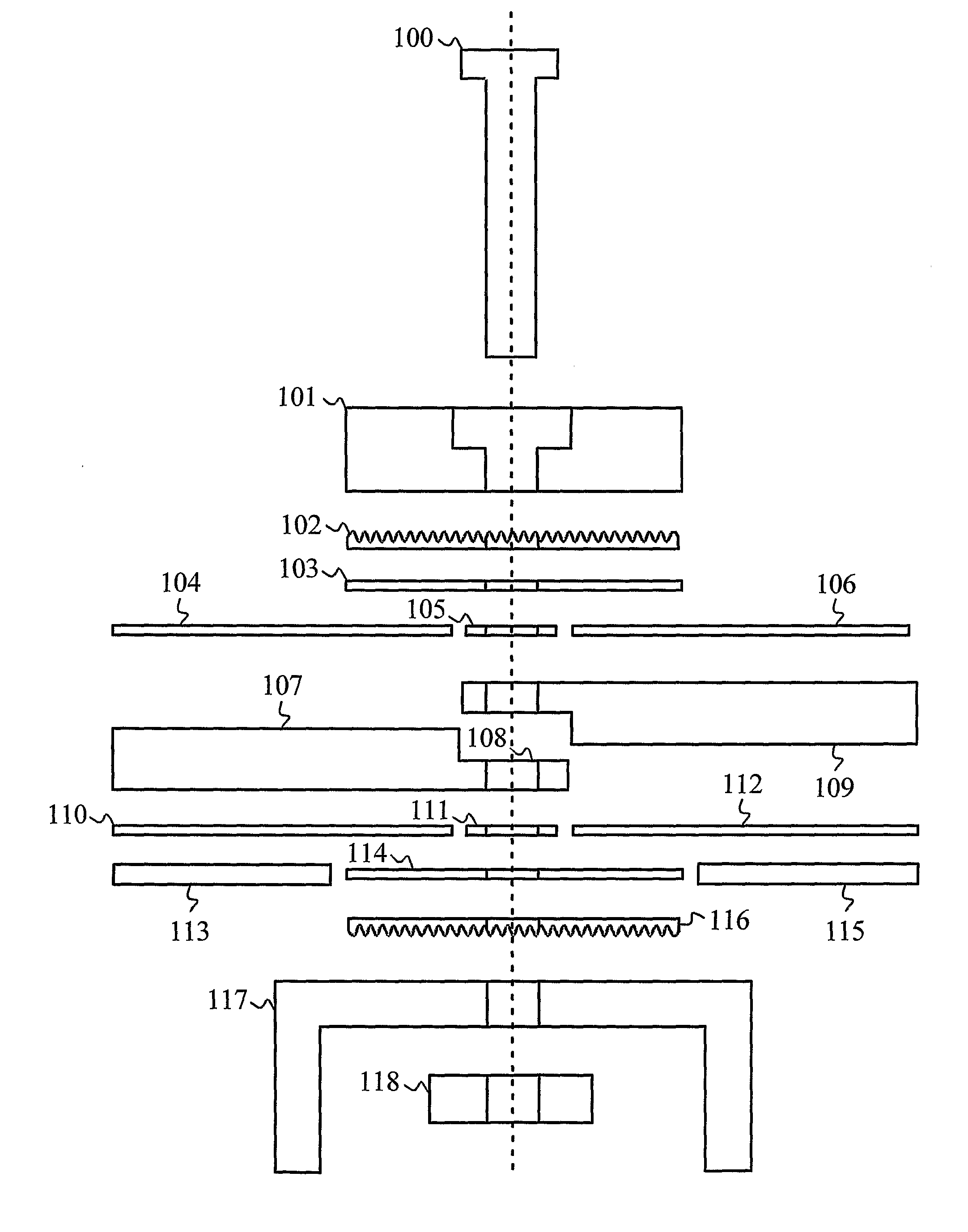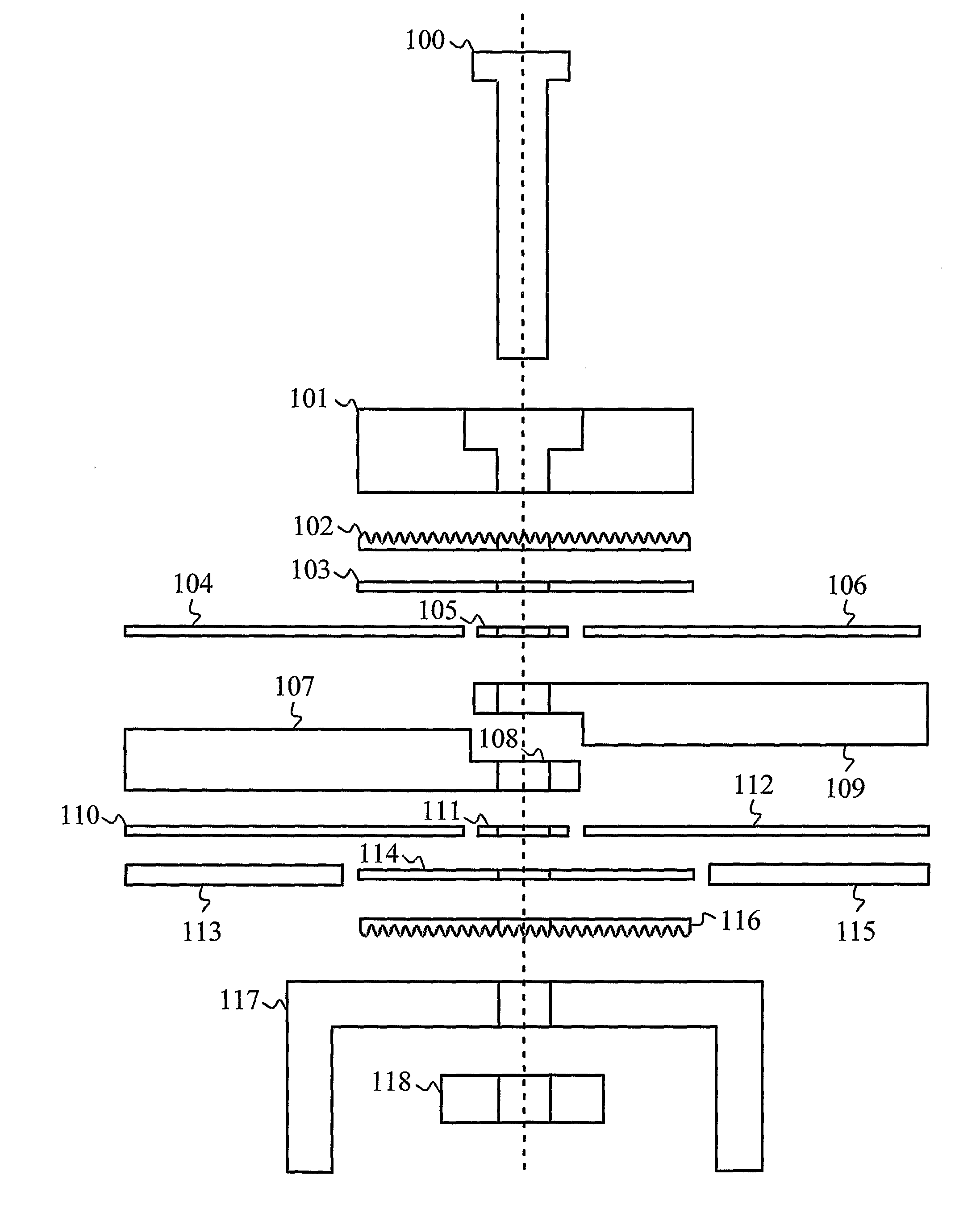Joint Structure Between the Wall Elements of a Magnetically Shielded Room
a magnetic shielding room and joint structure technology, applied in the direction of couplings, electrically conductive connections, rod connections, etc., can solve the problems of plate thickness and profile not being completely uniform, and achieve the effect of improving contact, eliminating weakening effect on functioning, and improving electrical conta
- Summary
- Abstract
- Description
- Claims
- Application Information
AI Technical Summary
Benefits of technology
Problems solved by technology
Method used
Image
Examples
Embodiment Construction
[0021] The present invention discloses a joint structure between the wall elements of a magnetically shielded room. The cross section of the joint structure is shown in FIG. 1.
[0022] The joint structure is associated specifically with the structure of a so-called lightweight shielded room. A lightweight shielded room is a shielded room shielding against magnetic interferences and consisting of elements that can be built on site about the measuring devices. The joint structure is used to join together two so-called sandwich elements. One wall element consists of a thick aluminum plate 107, coated e.g. with tin, of an inner μ metal plate 104, of an outer μ metal plate 110 and of a thin aluminum plate 113. An inner plate is herein used to mean a plate that is disposed closer to the measuring equipment to be shielded with the elements and at the same time closer to the inside of the shielded room. When examining the plate structure from the inside of the shielded room to the outside, t...
PUM
 Login to View More
Login to View More Abstract
Description
Claims
Application Information
 Login to View More
Login to View More - R&D
- Intellectual Property
- Life Sciences
- Materials
- Tech Scout
- Unparalleled Data Quality
- Higher Quality Content
- 60% Fewer Hallucinations
Browse by: Latest US Patents, China's latest patents, Technical Efficacy Thesaurus, Application Domain, Technology Topic, Popular Technical Reports.
© 2025 PatSnap. All rights reserved.Legal|Privacy policy|Modern Slavery Act Transparency Statement|Sitemap|About US| Contact US: help@patsnap.com


